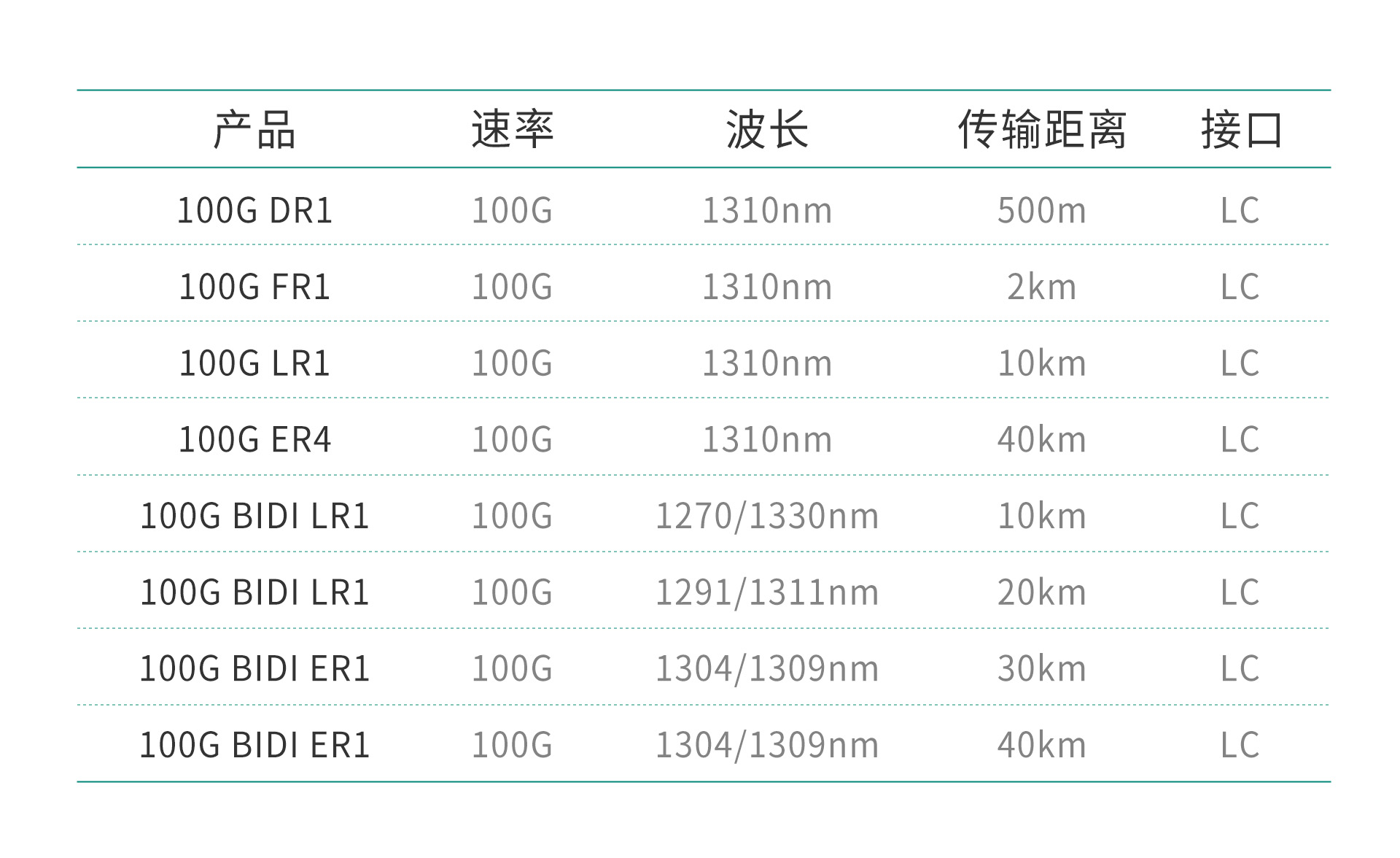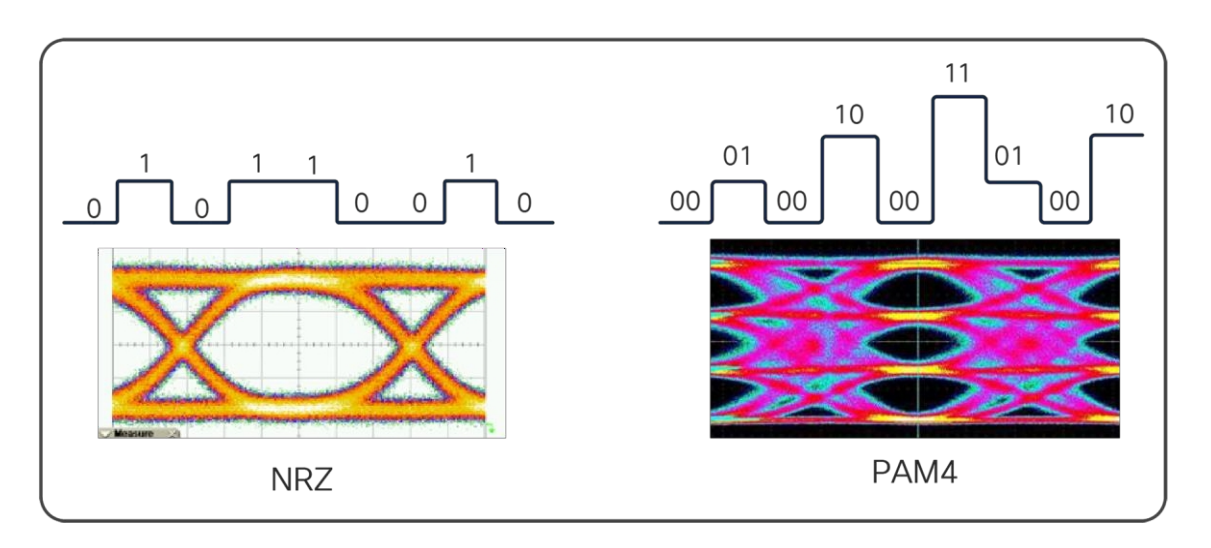
Введение в технологию Single-Lambda 100G и PSM4
В области оптической связи технологические инновации быстро меняются, поскольку скорость передачи данных продолжает расти. В последние годы быстро развивались подключаемые оптические модули с более высокой скоростью передачи данных, а сложность их конструкции и взаимодействия с хостами коммутаторов и маршрутизаторов возросла. Сегодняшние оптические модули 100G стали ключевым фактором стоимости сетевого оборудования и проектирования оптоволоконных инфраструктур, а Single-Lambda 100G, стандарт нового поколения для технологий оптической связи, становится основным направлением рынка.
Что такое Single-Lambda 100G?
Соглашение 100G Lambda MSA (Соглашение с несколькими источниками), в котором используется одноволновая технология модуляции PAM4 (Амплитудно-импульсная модуляция 4) со скоростью 100 Гбит/с, стандартизирует спецификации для оптических модулей Single-Lambda 100G.
Ранее в большинстве спецификаций оптических модулей 100G использовался NRZ, двухуровневый формат двоичной модуляции. PAM4 содержит в два раза больше данных, чем NRZ, и не требует существенного увеличения скорости оптики. В результате та же базовая оптика, которая может передавать только 50G с использованием NRZ, также может использоваться для 100G PAM4.
Целью MSA, созданной для создания экономически эффективных решений для коммутаторов, маршрутизаторов и транспортных сетей высокой плотности, является определение спецификации оптического модуля, которая позволит производить будущие подключаемые оптические модули 100G и 400G в больших объемах и, следовательно, с низкими затратами. расходы.
Оптические модули 100G DR1/FR1/LR1/ER1 компании ETU-LINK

Что такое PAM4?
PAM4 (Pulse Amplitude Modulation) — четырехуровневая импульсная амплитудная модуляция. Технология сигнализации PAM4 — это метод модуляции, который использует четыре различных уровня сигнала для передачи сигналов, а в приложениях оптических модулей модулируется интенсивность света.
NRZ (без возврата к нулю) — это традиционная схема модуляции, используемая почти всеми низкоскоростными оптическими модулями и большинством других оптических модулей 100G, которая модулирует интенсивность света на двух уровнях и, следовательно, является двоичной.
PAM4 использует четыре уровня кодирования и поэтому может кодировать два бита за цикл оптического импульса вместо одного, как в NRZ. В результате PAM4 имеет примерно ту же полосу пропускания сигнала, что и NRZ, но передает вдвое больше данных, чем NRZ. Однако применение технологии PAM4 также создает некоторые проблемы, такие как усиление влияния амплитудного шума. Для решения этих проблем в технологии Single-Lambda 100G используются различные передовые методы, такие как снижение акцента, детальная характеристика оптических передатчиков, усовершенствованная коррекция цифровых фильтров, схемы восстановления тактовой частоты и сильная FEC (упреждающая коррекция ошибок).

PAM4 передает два бита за импульс, поэтому в NRZ можно передать вдвое больше информации.
Подводя итог, можно сказать, что сочетание технологии PAM4 и Single-Lambda 100G произвело революцию в области оптической связи. Они не только повышают скорость и эффективность передачи данных, но также обеспечивают стабильность и надежность передачи данных с помощью ряда передовых технических средств. Считается, что благодаря постоянному развитию технологий и глубокому расширению применения PAM4 и Single-Lambda 100G будут играть еще более важную роль в области оптической связи в будущем.
Категории
Новый блог
Теги
новые продукты
Оптический трансивер 1.25G SFP 1550 нм 200 км LC Читать далее
Оптический трансивер 10G SFP+ ZR 1550 нм 120 км LC Читать далее
100G QSFP28 ZR4 BIDI 80 км оптическое трансивер Читать далее
Оптический приемопередатчик 100G QSFP28 LR с одинарной лямбдой 10 км LC Читать далее
Оптический приемопередатчик 25G SFP28 ZR 1310 нм 80 км LC Читать далее
Оптический приемопередатчик 100G QSFP28 ZR4 80KM LC поколения II Читать далее
Оптический приемопередатчик 100G QSFP28 BIDI 40 км LC Читать далее
Оптический приемопередатчик 100G QSFP28 BIDI 10 км LC Читать далее
© Авторские права: 2025 ETU-Link Technology CO ., LTD Все права защищены.

Поддерживается сеть IPv6